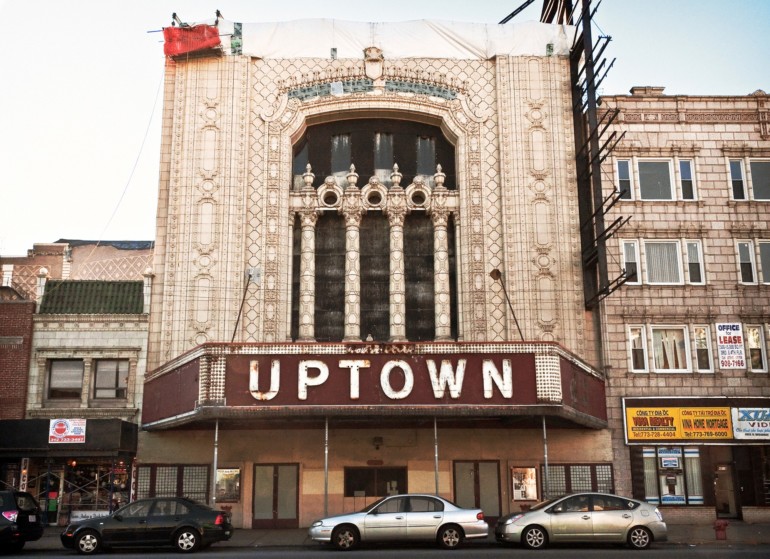For now, and likely for the foreseeable future, concerts, plays and sporting events, are a thing of the past – a consequence of the COVID-19 pandemic. The experience still feels a bit surreal, but it’s not unprecedented.
When the Uptown Theatre opened in August of 1925, for example, the public was finally getting back to normal after enduring the 1918 flu pandemic, which caused 675,000 American deaths over three long years.
To woo the weary, owners, the Balaban and Katz Theater Corporation, touted the theatre’s cutting-edge air filtration system and air-conditioning, which offered a safe, cool respite from the scorching summer heat for only a nickel. Those who couldn’t attend in person could enjoy radio programs broadcast from an in-house studio.
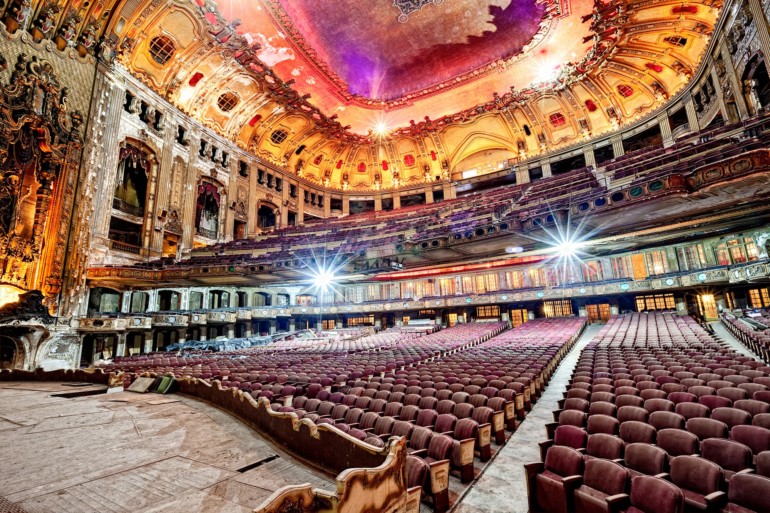
While the system was state-of-the-art for its time, the grand Spanish Revival architecture by Cornelius Ward Rapp and George Leslie Rapp was the big draw. Described as “an acre of seats in a magic city,” the Uptown Theatre had three spectacular lobbies with soaring ceilings, ornate high-relief plaster castings and 4300 seats across 46,000 square feet.
To describe it as a success would be an understatement: Within five years, more than 20 million people had experienced its grandeur.
“The crowds probably felt like they had been transported to centuries before someplace in Europe,” says Eric Allix Rogers, the events and communications manager at the Frank Lloyd Wright Building Conservancy. “It’s not that different than the experience you might get walking into a really impressive cathedral.”
But perhaps a star as bright as the Uptown Theatre is destined to burn itself out. As receipts declined over the years, the owners turned to other sources of revenue, renting the space out for corporate meetings and later selling furnishings and fixtures.
And in 1975, Jam Productions began exclusively producing concerts there, booking acts such as Bob Marley, Frank Zappa, Genesis, Prince and the Grateful Dead.
“It’s truly a spectacular place to see a concert,” says Jam Productions co-founder and current Uptown Theatre owner, Jerry Mickelson, who describes it as the eighth wonder of the world. “You walk in off the street, and it’s so magical that you forget your troubles.”
Serving as a venue for chart-topping rock stars would have been a fine fate, but fate had other ideas. In dire need of maintenance, the theatre shut its doors in 1981. And then on a frigid winter night not long afterward, the roof’s storm drains froze and burst, causing damage to a portion of the plaster that has still not been restored.
But the Uptown Theatre has never been forgotten: It was added to the National Register of Historic Places in 1986 and named a City of Chicago Landmark in 1991.
It’s also served as the backdrop for many media productions over the years, including the hit 1991 thriller, Backdraft, Transformers 4 and most recently, a 2017 video by singer, songwriter and pianist, Regina Spektor, who performed in the grand lobby.
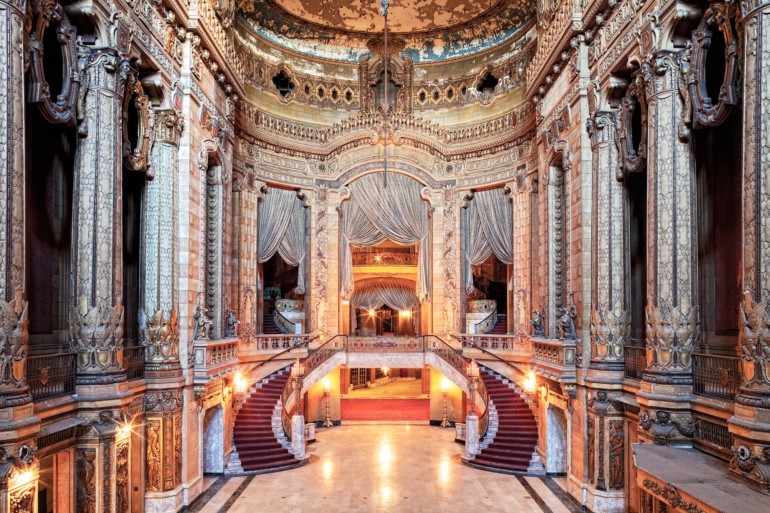
Former Uptown resident, Andy Pierce, first experienced the theatre in the late 1990s, when he volunteered to setup the interior for the Heart’s Party, a riotous fundraiser for HIV research. He was astonished by the building’s grandeur. “It’s an emotional experience to see it completely full of people with lights and music,” he says.
Pierce was so blown away by the space that he and others soon founded Friends of the Uptown, which led tours for a time and put in their own elbow grease to clean and maintain the decaying interior.
“The volunteers grew up going to it,” he says, noting that they have spent thousands of dollars out of their own pocket. “They have a whole lifetime of memories, so they’re invested on a whole other level. It’s a part of them.”
According to Linda Winke, a docent at the Chicago Architecture Center who has led many tours through the neighborhood’s historic architectural sites, the Uptown Theatre has a powerful effect on people, even those who have never experienced it.
“There’s a lot of love for the building” she says, noting that people often tell stories of their grandparents going there to see movies back in its heyday. “The longer it goes without being restored, the more we worry about it.”
She’s not alone in worrying about the Uptown’s future. Jerry Mickelson was so outraged by a proposal to turn the seating area into an indoor go-kart track, that, in 2008, he and Jam co-founder, Arny Granat, bought the property with the hopes of turning it back into a concert venue.
In 2018, Mayor Rahm Emanuel, along with 46th ward Alderman, James Cappleman, Jam Productions and Farpoint Development, announced that the theatre would finally be restored and reopened.
The $80-million project would be funded by a combination of PACE financing, TIFF and Adopt-A-Landmark funds along with anticipated federal tax credits, Build Illinois Bond funding and $30 million in equity and conventional financing.
Mickelson envisioned the space as a multi-use performance venue, perhaps even with an artist in residence. To that end, he plans to install removable seats, which will increase the capacity to 5,800 people, allowing both reserved seating and general admission shows.
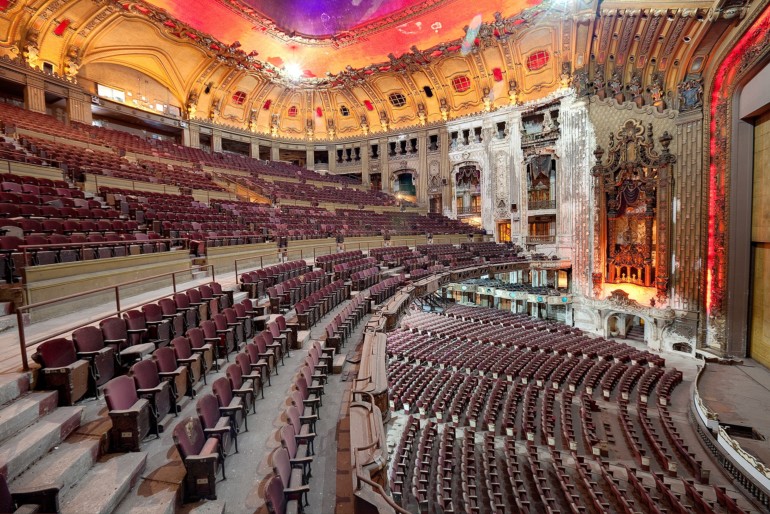
He estimates that he needs another $35 to $40 million for the massive project, which will include new seats, concession areas, elevators and mechanicals as well as the restoration of the front façade’s terra cotta “wedding cake,” which is still in storage inside the theatre. He was well on track to reach his goal when, in an odd case of history rhyming, the COVID-19 pandemic struck.
Despite the setback, Mickelson remains bullish about its future. He points to the success of similar movie palaces, such as the Fox in Oakland and the Kings Theatre in Brooklyn, which have been revitalized to the benefit of the surrounding area, attracting foot traffic, bars, restaurants and retail.
Indeed, the Uptown Theatre would once again be the capstone to the burgeoning entertainment district, which is home to venues such as the Riviera Theatre, the Aragon Ballroom and the Green Mill, one of Al Capone’s favorite haunts.
“It’s important that other future generations get to experience this masterpiece and marvel in its splendor and magnificence,” he says. “In the near future there will be a vaccine to treat COVID-19, and when that happens, it’ll be the roaring 20s all over again.”
More from Better:
- The Chicago-area Private School Guide
- On the Market: 5 Hot Chicago and North Shore Properties With Stunning Outdoor Spaces
- E-Learning Tips for Parents: How to Prepare for a Successful School Year
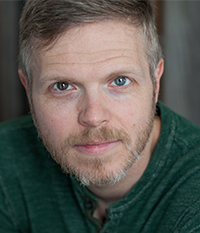 Tate Gunnerson is a Chicago-based freelance journalist with an equal appreciation for natural beauty and good design. He is a passionate supporter of St. Jude Children’s Research Hospital and the National Kidney Foundation.
Tate Gunnerson is a Chicago-based freelance journalist with an equal appreciation for natural beauty and good design. He is a passionate supporter of St. Jude Children’s Research Hospital and the National Kidney Foundation.
